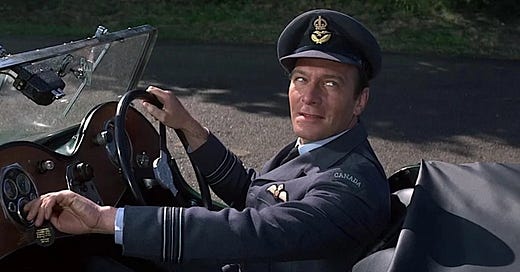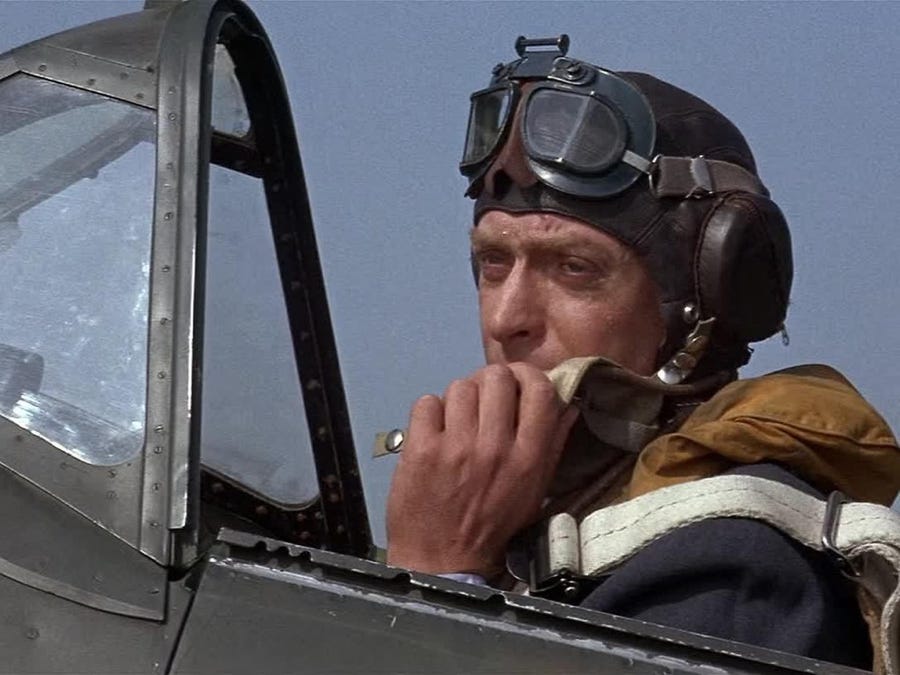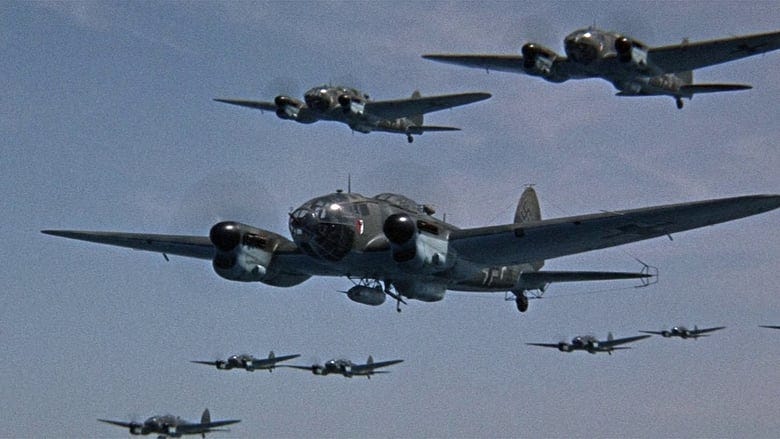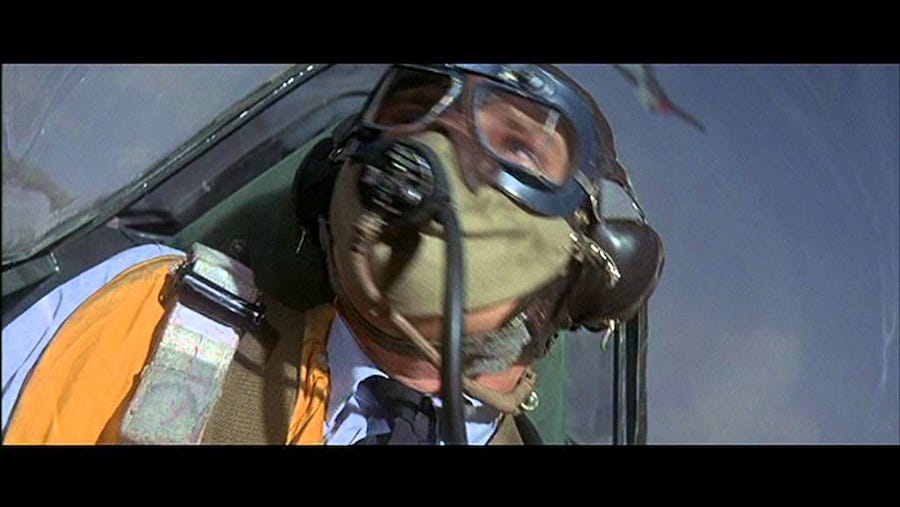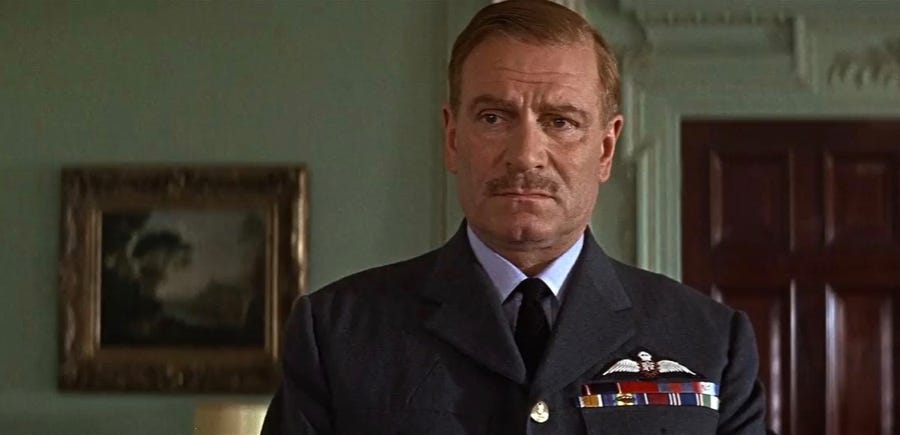Is the traditional Bank Holiday film dead? Repeat viewings over a Christmas break, on a rainy, raw Easter Monday afternoon, or on a hot, languid August with curtains drawn. And the same old cinematic catalogue, which should resonate with British readers of a certain vintage: The Guns of Navarone (1961), Mary Poppins (1964), Goldfinger (1964), The Sound of Music (1965), Chitty Chitty Bang Bang (1968), The Railway Children (1970), The Eagle Has Landed (1976) — and, of course, The Battle of Britain (1969). Films, which we have seen so often, that they enter the national mythology and, over time, gain an extra dimension.
With digital television and instant availability, the impact is lost — especially if a film is shown over and over again on some obscure, ersatz channel at two o’clock in the morning. I’m trying to work out the number of times I’ve seen The Battle of Britain? Fifteen, sixteen, even seventeen times? Seriously. The first viewing must have been at the age of eight, or so: on our black and white, veneered television set, rented from DER. Allowed to stay up in my dressing gown. And I watched it again last night (oh, the things I do for WEEKEND FLICKS.!) on a Special Edition 2-disc DVD found on Amazon for the bargain price of £7.99. Most excitingly, this edition gives you the option to watch the entire caboodle set against the original, rather cerebral William Walton soundtrack. The score that was supposed to be, but never made it to the final cut. A fascinating experiment. As much as I am a huge fan of Sir William (who remains one of my favourite composers), I can understand why the producers ditched his score and replaced it with Ron Goodwin’s, apart from the ‘Last Battle’ sequence — the terrific dog-fighting montage set to Walton’s Battle in the Air. Even if, as André Previn once said. “If they can reject the music of Walton, what chance do us mere mortals have?” For as sophisticated as Walton’s score is, I’m not entirely convinced that it works from a cinematic point of view. Or perhaps it’s just too sophisticated? And then there’s… er… an uneasy bit, right at the beginning of the film when the Luftwaffe generals inspect their jack-booted troops from the back of an open Mercedes staff car, set (in Walton’s original interpretation) against a stirring, patriotic, rather British theme, along the lines of Crown Imperial or the Richard III Prelude. Unfortunate, that. Goodwin replaced it with an appropriately Teutonic march.
In the 1970s playground, arms outstretched, we were Spitfire pilots with muddied knees, “Behind you, Ginger! Behind you!” “This is Rabbit Leader! Bandits! Angels One Five!” “Ack ack ack ack…! I spent Saturday afternoon in the hopeless construction of an Airfix Stuka (no finger-wagging in those days; the Swastika remained), the perspex hood a mess of Humbrol enamel and bloomed cement — as it was called to those in the know. I had a subscription to Battle comic, or was it Warlord? An early introduction to the German language, Achtung! Die, Englischer Swinehund! Not for use in the Brave New World of the Common Market.
And as the late 1920s and early 1930s brought disturbed memories of the Great War, so the early 1950s brought a spate of patriotic, stiff-upper-lip war films (Richard Todd, John Mills and Kenneth More) and a rash of war memoirs: Eric Williams’ The Wooden Horse (1949), John Guest’s Broken Images (1949), W. Stanley Moss’s Ill Met by Moonlight (1950), Richard Pape’s Boldness Be My Friend (1953), Lord Cardigan’s I Walked Alone (1952), Pat Reid’s The Colditz Story (1952) and Paul Brickhill’s Reach for the Sky (1954). In the summer of 1940, Britain stood alone, albeit with the significant support of Empire and Commonwealth. But by the 1970s, perceptions of the war (I hesitate to use cliché) had become set in stone. The German officers wear their caps at rakish angles, click their heels and drink cognac, “Gentlemen! A toast! The Führer!” Hermann Goering, corpulent in sky blue dress uniform and Field Marshal’s gold baton, peers through binoculars at the looming, misty White Cliffs of Dover — later parodied in the Dad’s Army film of 1971. In contrast, the courageous Brits wear silk scarves, drive dark green MGs and drink bitter in quaint pubs. Plucky Cockneys crack jokes amongst the rubble, black labradors look up at the sky; Merlin engines hum over the oast houses and wheat fields of Kent. “For you, ze war is over…” Was it really like that? Yes. No. Sort of. Up to a Point Lord Copper.
With hindsight — and hindsight is a wonderful thing — we now know that Operation Sea Lion, the German invasion of ‘England’, as the Germans liked to call it, was most likely doomed to failure. The Germans lacked amphibious equipment, their flimsy river barges would have been towed across the English Channel, a stretch of water notorious for its rough weather, fierce winds and rogue waves, and even then, if the RAF had been destroyed, the German invasion force would have had to face the might of the Royal Navy, then the largest and most powerful navy in the world. In 1974, a sophisticated wargame, hosted by The Daily Telegraph and military historian, Dr. Paddy Griffith, at the Royal Military Academy, Sandhurst, with a panel of distinguished British and German umpires, including General Adolf Galland, the former Battle of Britain ace, had the mock invasion declared as a ‘resounding failure’. Luftwaffe intelligence consistently underestimated the strength of the RAF, there was a shortage of ammunition and insufficient air cover, none of this helped by the German navy’s relative weakness. Still, a wargame is a wargame. And things must have seemed different at the time: the ‘what ifs’ of a dangerous and complicated situation. In the dark and desperate days of 1940, the ultimate triumph of the RAF was still a magnificent achievement.
Keep reading with a 7-day free trial
Subscribe to Luke Honey's WEEKEND FLICKS. to keep reading this post and get 7 days of free access to the full post archives.

